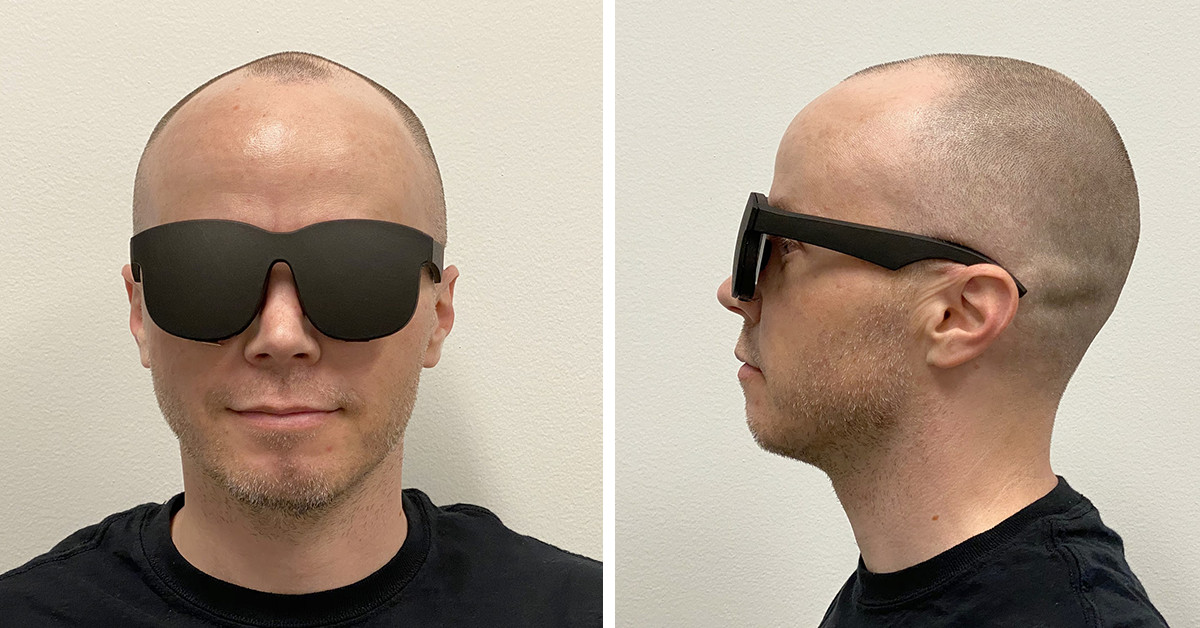
Fb has proven off a brand new proof-of-concept digital actuality headset, and it has a totally totally different design than most different VR gadgets available on the market at the moment. As a substitute of a cumbersome contraption that covers up the highest half of your face and must be strapped to your head, this proof-of-concept headset appears to be like type of like a pair of huge sun shades that may sit comfortably in your ears.
But Fb is billing this new gadget as not a pair of augmented actuality glasses, as frequent conceptions of AR gadgets go, however a respectable VR product. They’re very skinny, with a show thickness of lower than 9mm, and Fb claims they've a subject of view that’s “similar to at the moment’s client VR merchandise.” Right here’s a top-down view:
:no_upscale()/cdn.vox-cdn.com/uploads/chorus_asset/file/20061368/Holographic_optics_1.jpg)
The proof-of-concept glasses aren’t simply skinny for appears to be like, although — in addition they apparently beam photographs to your eyes in a manner that’s totally different than customary VR headsets available on the market at the moment. I’ll let Fb’s analysis staff clarify a type of methods, referred to as “holographic optics:”
Most VR shows share a typical viewing optic: a easy refractive lens composed of a thick, curved piece or glass or plastic. We suggest changing this cumbersome component with holographic optics. Chances are you'll be acquainted with holographic photographs seen at a science museum or in your bank card, which seem like three-dimensional with sensible depth in or out of the web page. Like these holographic photographs, our holographic optics are a recording of the interplay of laser mild with objects, however on this case the item is a lens relatively than a 3D scene. The result's a dramatic discount in thickness and weight: The holographic optic bends mild like a lens however appears to be like like a skinny, clear sticker.
The proof-of-concept headset additionally makes use of a way Fb calls “polarization-based optical folding” to assist scale back the quantity of house between the precise show and the lens that focuses the picture. With polarization-based optical folding, “mild will be managed to maneuver each ahead and backward inside the lens in order that this empty house will be traversed a number of occasions, collapsing it to a fraction of the unique quantity.”
This GIF from Fb helps visualize how each methods work collectively:
These glasses are only a proof-of-concept, although, so it’s unclear in the event that they’ll ever come to market. “Whereas it factors towards the long run improvement of light-weight, snug, and high-performance AR/VR know-how, at current our work is solely analysis,” Fb’s analysis staff writes in its weblog submit.
Many firms are circling across the concept of glasses-like AR/VR headsets that mix the very best of each applied sciences right into a single gadget, nevertheless it often finally ends up as a bulkier VR-centric headset that makes use of outward-facing cameras to additionally carry out mild AR. Intel and Microsoft, each of which use the phrase combined actuality to explain gadgets just like the HoloLens, have been investing on this concept for a while.
However extra firms are actually working behind-the-scenes to make a smaller, actually hybrid gadget a actuality. Apple has reportedly been engaged on one thing like this for years, and Google simply at the moment purchased AR glasses firm North, an acquisition that will permit the corporate to revive its dream of a client Google Glass-style heads-up show.
Whereas we are able to’t be certain if any of the tech giants will launch mixture AR/VR glasses, the proof-of-concept Fb is exhibiting off may supply a glimpse at what such a tool would possibly seem like in some unspecified time in the future sooner or later.
Try this whitepaper from Andrew Maimone and Junren Wang on the Fb Actuality Labs staff if you wish to be taught extra about Fb’s proof-of-concept.

0 comments:
Post a Comment